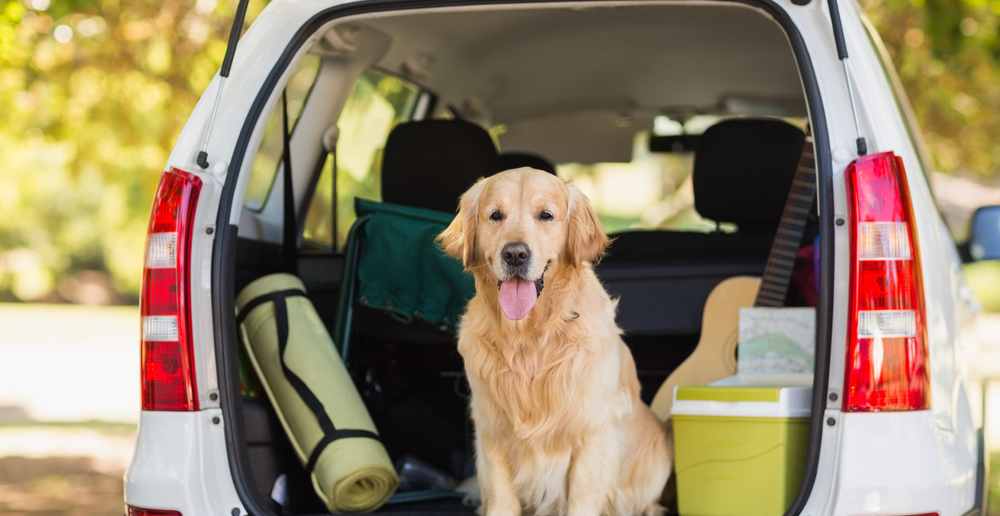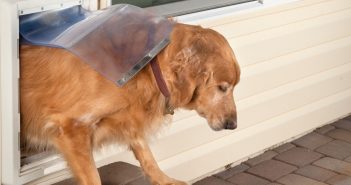You’re planning a car trip and considering bringing your dog with you. In addition to being fun and exciting for both of you, bringing your dog to new places can help strengthen your bond, mentally stimulates them, and can help with socialization. If you’re staying overnight, it also can be less stressful than putting them in boarding and can be cheaper and easier than finding a dog sitter.
But adding a dog into the mix on your next car trip adds a few elements. This article covers restraint options while driving, what to bring, and other safety considerations for car travel.
1. Before You Leave
Set-up a Restraint for Your Dog
To keep your dog safe in an accident or simply out of your lap, you’ll want to set-up a restraint. Some options to consider are listed below, depending on your dog and vehicle.
Dog Crate
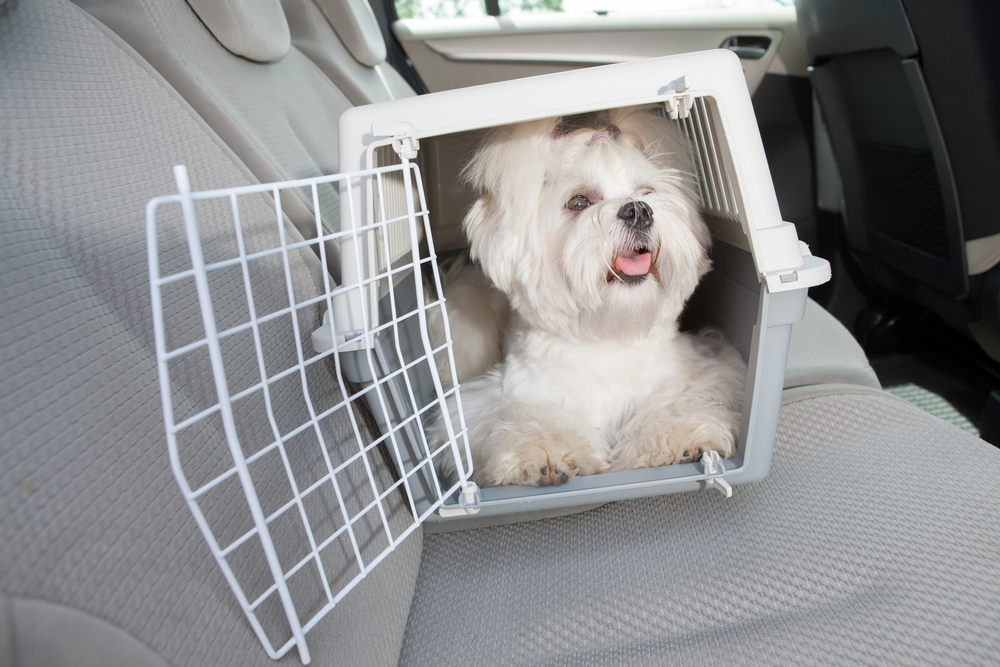
If your vehicle has space, crash-tested dog crates for car travel are the best way to keep your dog safe when driving. In addition to keeping your dog out of your lap, crash-tested crates are less likely to collapse in a collision. The crate should be large enough for your dog to comfortably stand up, lay down on its side and turn around.
Seatbelt for Dogs
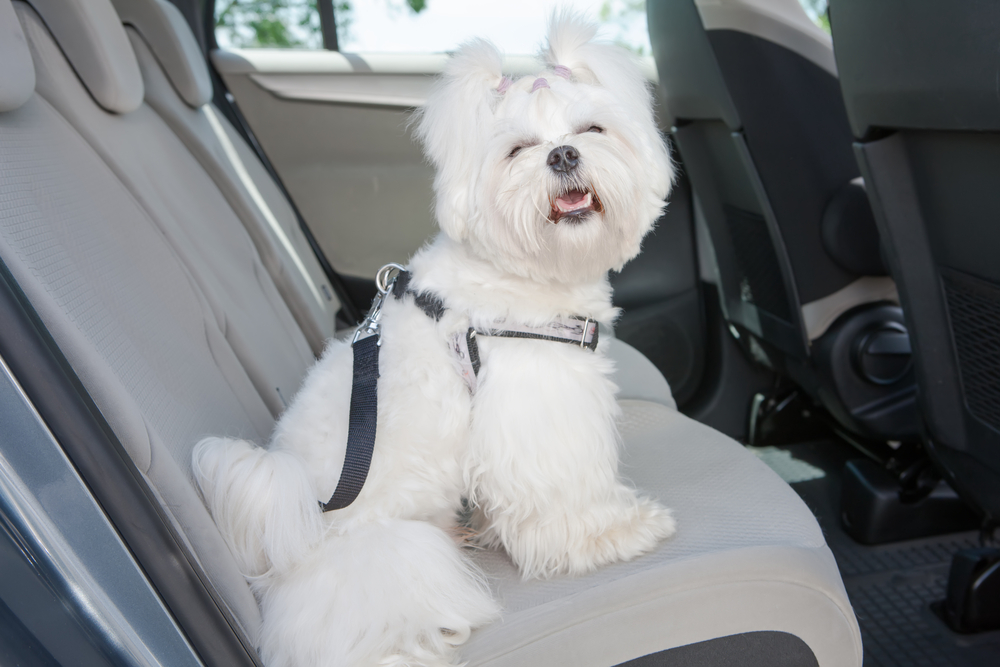
A seatbelt designed specifically for dogs will also keep your dog out of your lap and help stop your dog’s forward momentum if you are in an accident. However, it will not protect your dog in a collision. Your dog should be able comfortably sit, lay down and turn around. The seatbelt should be used in conjunction with a harness (using a collar could choke them if you brake too hard or are in an accident). Note: If your dog likes to chew if they are not closely monitored, this kind of restraint system is likely not for them.
Barriers

If your vehicle isn’t large enough to set up a crate and a harness seatbelt does not work, a physical barrier is another option. This restraint can allow your dog more room and freedom within the vehicle but again keeps them out of your lap and can help stop or slow down forward momentum in an accident. A physical barrier will not protect your dog from a collision and may not collapse during a crash depending on the material.
Pack The Essentials
There are a few items to bring with for a car ride.
Bowls
You may want to leave a small amount of water out for your dog to drink freely while you are driving. If this isn’t feasible, you’ll want to have a bowl ready at rest stops. I never go on a trip without a collapsible bowl.

Collar and Tags
Make sure your dog has a collar on with identification tags. While your dog should also have a microchip in case the collar falls off, traditional identification tags are the best way to have your dog returned quickly if he or she gets lost while on the road.
Harness
Your dog will need to be wearing a harness if you use a seatbelt restraint. Harnesses are also helpful at stops, especially if your dog may slip past you: A harness is a lot easier to grab than a collar!
Leash
You’ll want to have a leash handy for rest stops. If I am camping, I may pack two leashes, one for rest stops and hiking and one for hanging out at the campsite.
Poop bags
You’ll need to pick up after your dog when they do their business!
Toys
Bringing your dog’s favorite toys with can help keep them occupied when on the road.
Dog Bed or Blanket
Not only does your dog’s bed or blanket make the trip more comfortable physically, but it is something that smells familiar and can help them feel more comfortable mentally.
Treats
Because traveling can stress dogs out (which can affect digestion), you won’t want to overdo it on the treats but you may want to have some handy for training purposes.
Food
For overnight stays, pack enough dog food for the entirety of your trip. I also usually add a couple extra scoops in case the trip gets extended unexpectedly due to weather or car issues.
Don’t Feed Your Dog Right Before Hitting the Road
Like humans, some dogs get car sickness. Young dogs are especially prone to this. Because of this, avoid feeding your dog right before getting in the car. You’ll want to feed them at least a few hours before leaving or wait until you arrive at your destination.
Wear Your Dog out Before Getting in The Car
If you are able to, take your dog for a run or long walk right before leaving to help wear them out. While they may show excitement at the start of a car ride regardless, your dog will settle down more quickly if they are tired before getting in the car.
2. Safety on the Road
In addition to using a restraint, here are a few other things to consider to keep your dog safe and happy.
Never Leave a Leash Attached to Your Dog
Loose leashes are a choking hazard, so you should never leave a leash on an unattended dog.
Don’t Let Your Dog’s Head Hang out the Window
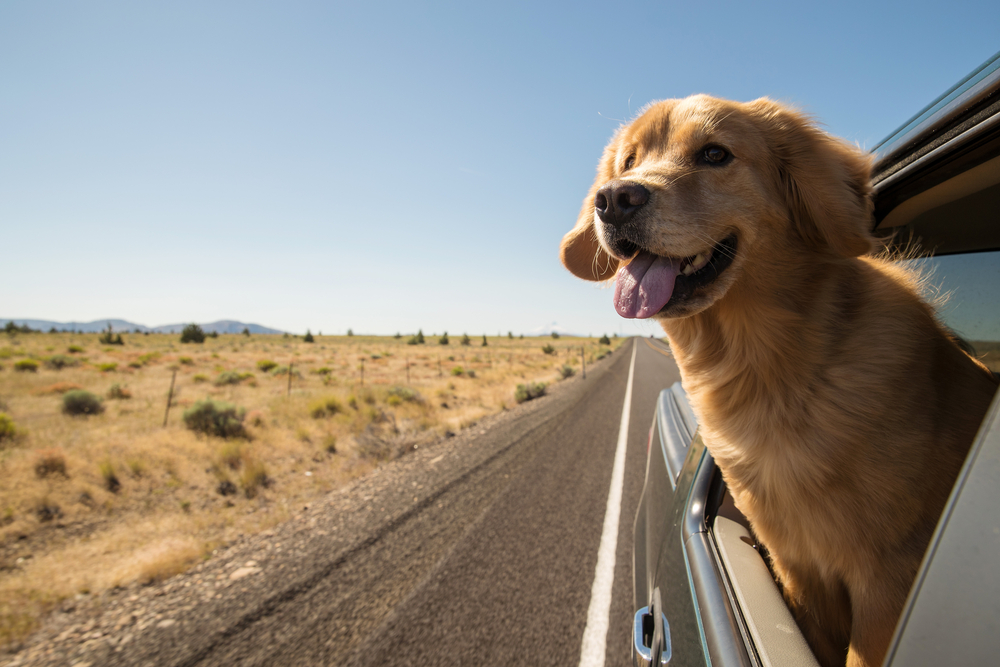
Only crack a window slightly so your dog’s whole head does not fit through it. While movies may romanticize the flapping jowls of a dog’s face hanging out the window of a moving car, there are a few safety concerns with doing this in real life. Firstly, there is no way to restrain them should they see a squirrel and decide to run after it. Secondly, flying debris may hit them. Thirdly, if you have to brake hard, you could hurt their neck when it slams into the window frame.
Lock Your Windows
This makes it so your dog cannot accidentally hit the power window button. You do not want to check a side mirror and unexpectedly find a dog smiling back at you.
Be Especially Aware on Hot Days
Heat stroke is a major concern on hot days, especially during car trips. Make sure your dog has plenty of water and air ventilation, and check on them frequently.
Never Leave Your Dog Alone in the Car for Extended Periods of Time
It is very dangerous to leave a dog in a car, even in seemingly mild temperatures. When the outside temperature is 70°F, a vehicle can reach 89°F after sitting for only 10 minutes and 104°F in 30 minutes. When it’s 80°F, the inside of your vehicle will reach 99°F in 10 minutes and 114°F in a half hour. It only takes 10 minutes to reach 114°F and this increases to 129°F within 30 minutes when outside temperatures are at 95°F.
In Conclusion
Bringing your dog with you on a road trip can be very fun and exciting. But it also comes with additional potential safety concerns. Hopefully, this article helps you ensure your dog is safe when traveling on the road with you.

